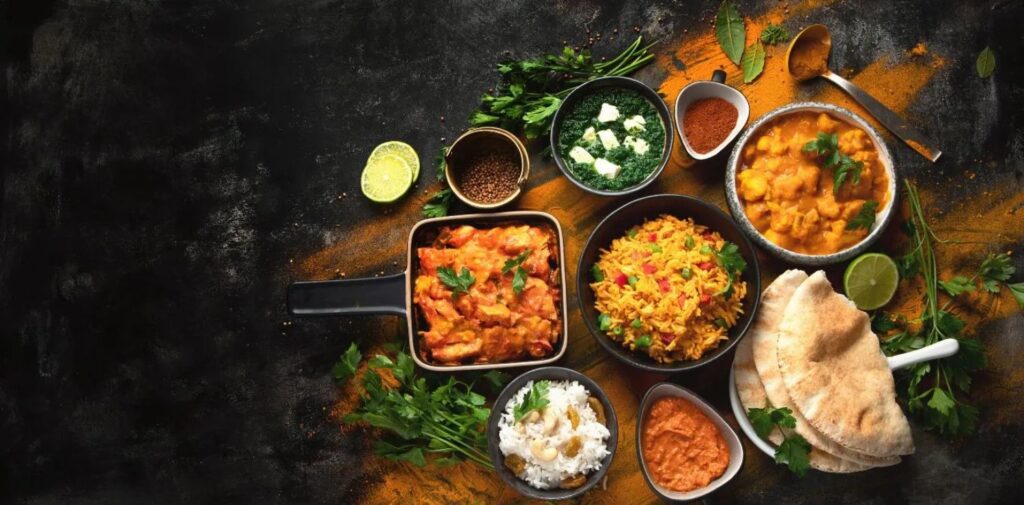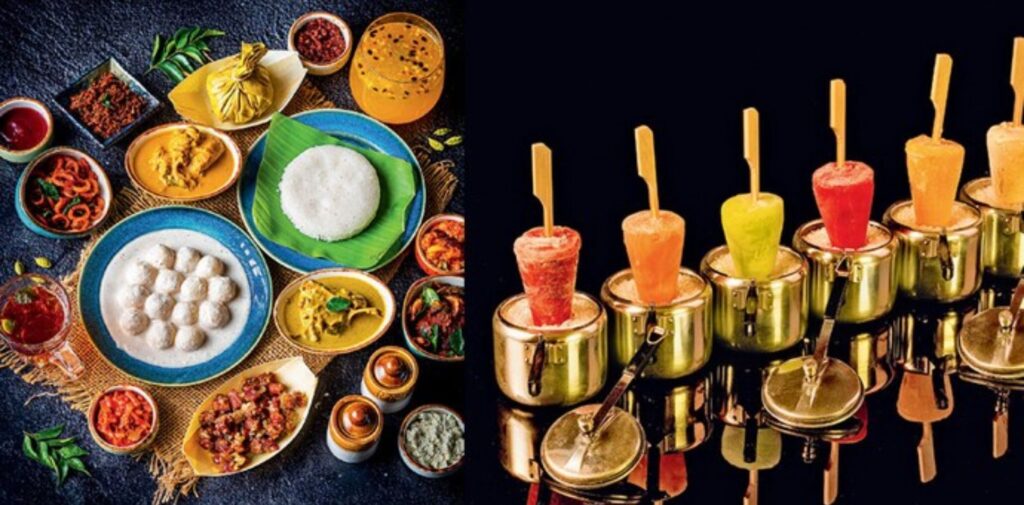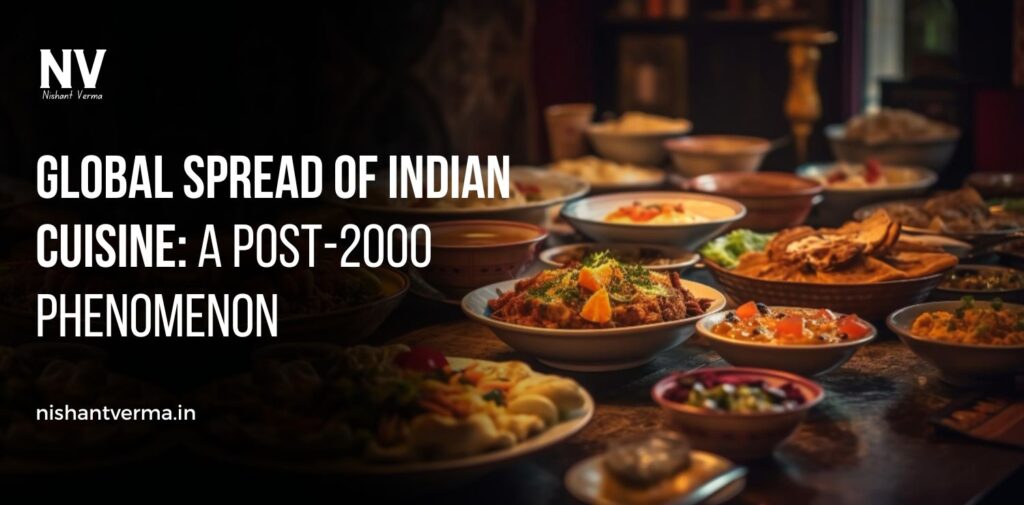Indian cuisine, with its rich variety of flavors, spices, and cooking techniques, has long been beloved by people around the world. However, it is in the 21st century, especially after 2000, that Indian food truly began to take its place on the global stage. From the streets of New York to the markets of Sydney, the popularity of Indian food has skyrocketed, transforming the way people view and experience food. This article explores how Indian cuisine has spread globally in recent decades, the factors behind this phenomenon, and the ways in which it continues to evolve and influence food cultures around the world.
The Global Appeal of Indian Cuisine
Indian cuisine offers a rich blend of flavors, textures, and aromas, which makes it an exciting choice for food lovers everywhere. Whether it’s the spicy curries of the north, the tangy chutneys of the south, or the tandoori dishes from the west, Indian food has something to offer everyone. Its wide range of vegetarian dishes also appeals to a global audience, including those who prefer plant-based diets.
One of the reasons why Indian cuisine has become so popular globally is because it caters to a wide variety of tastes. Indian food is known for its bold flavors, achieved through the use of a wide variety of spices, herbs, and seasonings. Ingredients like cumin, coriander, turmeric, and cardamom are used to create complex, layered tastes that are different from many other global cuisines. Whether it’s the creamy richness of butter chicken, the smoky flavor of grilled tandoori chicken, or the fresh zest of a mango lassi, Indian food offers a taste that is both unique and universally enjoyable.
In addition to the flavors, Indian cuisine is often associated with the idea of health and balance. Many Indian dishes use fresh vegetables, legumes, and grains, making them nutritious and satisfying. Indian cooking also incorporates a wide range of natural ingredients like ghee, yogurt, and spices, which are believed to have health benefits. As global interest in health-conscious eating grows, more people are turning to Indian cuisine for its nutritional value and health benefits.

Factors Behind the Global Spread of Indian Cuisine
Several factors have contributed to the global spread of Indian cuisine, particularly since 2000. The growing Indian diaspora is one of the key drivers of this phenomenon. As more Indians moved to different parts of the world, they brought their culinary traditions with them, introducing new countries and cultures to Indian flavors. In countries like the United States, Canada, the UK, and Australia, Indian immigrants started opening restaurants, cafes, and food stalls, which quickly became popular with local populations as well.
Another factor that has played a significant role is the increasing trend of globalization. As the world became more interconnected through travel, technology, and communication, people became more open to exploring new cuisines. The internet and food television channels have played a huge role in spreading food culture, and Indian food became a prominent feature on food shows, documentaries, and social media. People started sharing recipes, food blogs, and videos about how to cook Indian dishes at home, further raising awareness and interest in Indian cuisine.
In the last two decades, the rise of food delivery services and apps has also contributed to the spread of Indian food. With platforms like Uber Eats, Zomato, and GrubHub, it’s easier than ever for people to order Indian food from the comfort of their homes. The convenience of having a diverse range of cuisines available at the click of a button has made Indian food a popular choice for busy individuals and families, particularly in urban areas where food culture is continuously evolving.
Indian Restaurants Around the World
As Indian food began to gain popularity globally, the number of Indian restaurants around the world also increased dramatically. Major cities, especially those with large immigrant populations, started seeing an explosion of Indian restaurants, ranging from casual eateries to high-end fine-dining establishments. In cities like London, New York, Toronto, and Dubai, Indian cuisine became a significant part of the food landscape. In fact, London is home to one of the largest concentrations of Indian restaurants outside India, with a wide variety of regional Indian dishes being served across the city.
Indian restaurants have become more diverse and sophisticated, offering modern twists on traditional dishes while still preserving the authentic flavors. Chefs have started experimenting with regional Indian cooking styles and incorporating local ingredients into their menus. This fusion of traditional Indian cooking with global culinary trends has made Indian food even more appealing to a wider range of people.
In recent years, there has also been a rise in “fusion” Indian cuisine, which blends Indian flavors with other international cuisines. Dishes like “Indian-style” pizza, curry-flavored sushi, and tandoori burgers are just a few examples of how Indian food has been adapted to cater to local tastes. These innovations have helped Indian cuisine stay relevant and exciting in the modern food scene while retaining its cultural identity.

Indian Food in Pop Culture
The presence of Indian food in global pop culture has further accelerated its popularity. Movies, TV shows, and celebrity chefs have all played their part in bringing Indian cuisine to the masses. Celebrity chefs like Gordon Ramsay, Jamie Oliver, and Nigella Lawson have featured Indian dishes on their shows, while TV cooking competitions often highlight Indian flavors and techniques. The rise of social media influencers and food bloggers has also contributed to the worldwide popularity of Indian cuisine, with millions of people sharing their experiences and recipes online.
The success of Indian food in global pop culture is not limited to the kitchen. Indian food and spices have made appearances in movies, television series, and even advertisements. For example, the popular television series “The Big Bang Theory” often showcased Indian food, with characters like Raj Koothrappali bringing dishes from his home country into the storyline. Similarly, brands and restaurants have used Indian-inspired food items in global marketing campaigns, associating the unique flavors of India with concepts like adventure, boldness, and diversity.
Health and Sustainability Trends in Indian Cuisine
In the last few decades, there has been a growing interest in sustainable eating and healthy food choices, and Indian cuisine has aligned with these trends in many ways. The use of vegetarian ingredients, legumes, and plant-based proteins such as lentils and chickpeas has contributed to the increasing appeal of Indian food among people looking for healthy, meatless options. Indian dishes like dal, chole, and vegetable curries are packed with nutrients, making them an attractive option for health-conscious individuals.
In addition to being vegetarian-friendly, Indian cuisine also embraces sustainable practices. Indian cooking often uses local, seasonal ingredients, reducing the need for long-distance transportation and supporting local agriculture. The use of whole foods like grains, vegetables, and spices also supports a more sustainable and eco-friendly approach to eating. These factors have made Indian cuisine particularly popular among those who are conscious of both their health and their environmental impact.

The Future of Indian Cuisine
The future of Indian cuisine looks bright, with the trend of global expansion set to continue. As more people discover the diverse and complex flavors of Indian food, restaurants and chefs around the world will keep innovating and introducing new ways to experience Indian dishes. The increasing interest in regional Indian cuisines, like those from Kerala, Bengal, and Punjab, will further enrich the global food scene.
With the rise of plant-based and health-conscious diets, Indian food’s rich offerings of vegetarian and vegan options will continue to make it a popular choice. Moreover, the global fascination with spices and bold flavors means that Indian cuisine will remain a staple in kitchens and restaurants around the world. As India continues to lead in food innovation, its culinary influence will only grow, solidifying its place as one of the world’s most beloved and celebrated food cultures.
Conclusion: Global Spread of Indian Cuisine
The global spread of Indian cuisine is a remarkable success story of cultural exchange and culinary innovation. Since 2000, Indian food has gained widespread recognition and appreciation across the globe. The factors behind its rise, from the growth of the Indian diaspora to the influence of globalization and health trends, have helped Indian cuisine become a global phenomenon. With its rich history, diverse flavors, and emphasis on health and sustainability, Indian food will continue to inspire and captivate the world’s taste buds for years to come.




